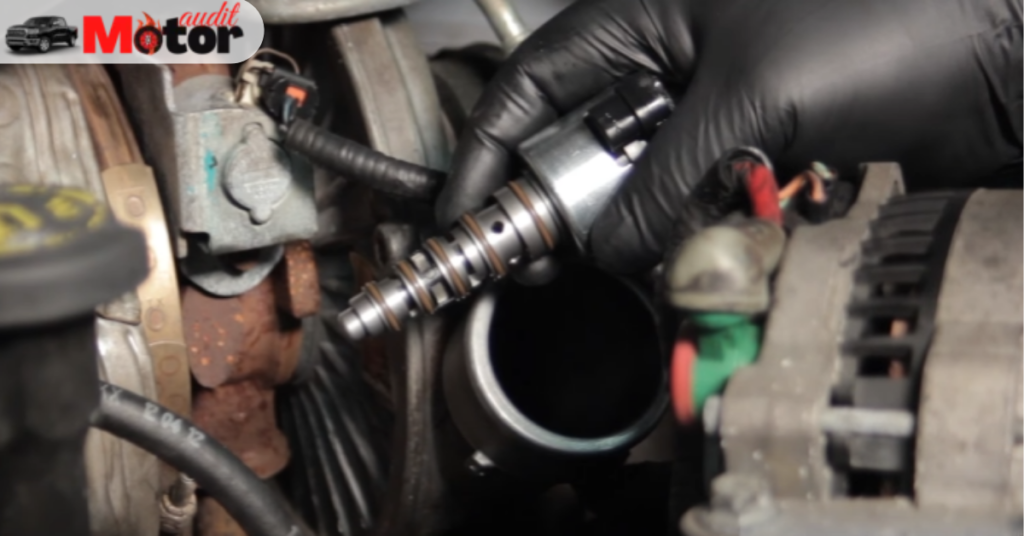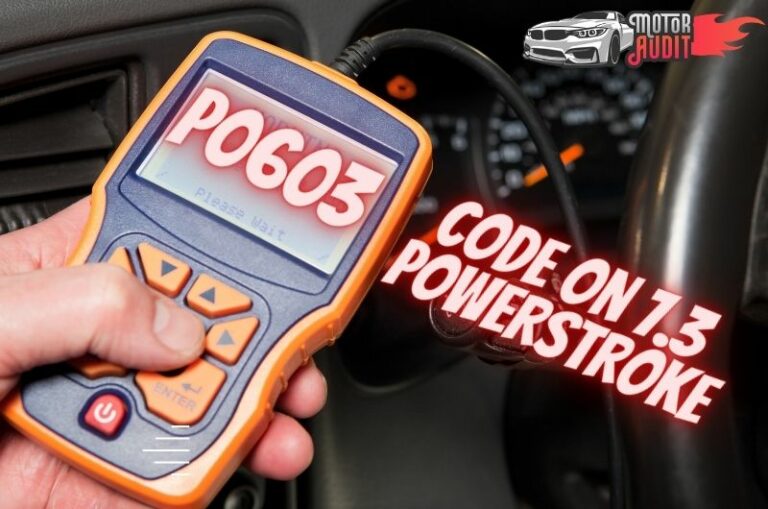4 Symptoms of a Bad VGT Solenoid on a 6.0L Powerstroke
The work of a VGT solenoid is crucial in controlling the flow of pressurized oil in a 6.0L Powerstroke engine. Like other parts, the solenoid can go bad due to various reasons.
In this article, I am going to focus on telling a bad 6.0 L Powerstroke VGT solenoid symptoms. Let’s get started.

Signs of A Bad 6.0L Powerstroke VGT Solenoid
The main signs of detecting a bad 6.0 L Powerstroke VGT solenoid are too much lag of turbocharger and poor performance of it.
Due to a failed solenoid, it becomes default to the open position and makes it harder to build boost.
There are a few more symptoms that need to be discussed. You can find them in the next section.
Read Also: 6 Symptoms To Detect IDM Failure On 7.3 Powerstroke!
4 Symptoms of a Bad VGT Solenoid on a 6.0L Powerstroke:
Some symptoms and engine testing can help you know how to detect a bad 6.0 L Powerstroke VGT solenoid.
After describing the signs and symptoms, I will explain the engine testing procedure.
1. Surging Turbo
While going down at 70 miles per hour, the turbo can start surging all of a sudden.
Whistling up and down frequently is common in this situation.
Some mentioned that pushing the clutch, letting it idle, and resuming the speed solved the problem initially.
However, you should have a look at the VGT solenoid, EBP sensor, and some other related parts for finding the cause of the issue.
From other owners, I have come to know a different symptom. They experienced the surge during red lights.
The tach bumped up to around 100-200 RPMs for a split second without good reasons. Eventually, it was a faulty VGT solenoid.
2. Testing with a Digital Multimeter
To measure whether the solenoid is working properly, you have to measure the resistance across it.
Take a multimeter and remove the connector so that you can access the male pins.
Place two probes of the multimeter on those pins, and see the reading. It should measure something between 3.42 and 4.18 ohms.
At the same time, notice the engine temperature which should be at 73F. In case, you see readings out of the mentioned range, the solenoid should be replaced immediately.
3. No Turbo Sound
Whether it is a stock exhaust or an aftermarket part, hearing no sound at all can be caused by a non-functional VGT solenoid.
Try to unplug the solenoid and see if anything changes. For stock exhaust, you may not hear any sound but pay close attention and you can notice something.
Read Also: 7 Symptoms To Detect A Bad MAP Sensor On 6.0 Powerstroke
4. Questionable Turbo Performance
After riding the 6.0L Powerstroke truck for a while, you may notice something unusual. After starting the engine, the turbo may not spool up.
The symptoms start showing up while getting into the high idle. Slowly, you will experience it at the beginning of a ride.
Furthermore, the turbo stops working while getting on the interstate running about a quarter throttle.
At that time, the turbo doesn’t respond for 10 to 15 seconds even after a hard try. I know that there are lots of reasons for the problem.
But mostly, the VGT solenoid is to blame. Some owners told the community to have solved it by VGT relearning.
There are tons of online videos showing how to relearn.
Read Also: How To Test 7.3 Powerstroke Glow Plugs? (Step By Step)
What to Do When You Detect A Bad 6.0L Powerstroke VGT Solenoid?
I have already explained how to detect bad solenoids in the previous section. And, that is what you should do in the first place.
Once you have confirmed that it is no longer functioning properly, you can replace the bad unit.
Some of you may think of cleaning it which is not an option for 6.0L Powerstroke VGT solenoids.
Those who can’t test the part themselves can take the help of a mechanic or take the truck to the nearest servicing shop.
If you have the necessary tools and some previous experience with the engine, you can do it by simply following the steps below.
- Remove the negative battery cables and VGT solenoid electrical connector.
- Then, you will have to remove the bracket that is holding the solenoid. Use an 8mm 12 point socket to take the bolts off.
- Now, pull out the solenoid while twisting it outwards side-by-side. It can require a little bit of force to oust the series of O-rings.
Pro Tip: Place a clean rag underneath to catch the VGT solenoid because it stays covered with motor oil.
- After that, coat the new solenoid along with soaking the valve and O-rings with motor oil. Apply 15W-40 motor oil for this purpose.
- Finally, reverse the process to install the new VGT solenoid.
For optimal performance, clean those electrical connectors using a compatible cleaner.
Read Also: Common 6.0L Powerstroke Transmission Problems With Solution
Is Replacing A Bad 6.0L Powerstroke VGT Solenoid Typically Expensive?
No, it is not very expensive to replace a Bad 6.0 L Powerstroke VGT Solenoid.
From usdieselparts.com, you can buy the top-rated replacement part marketed by Garrett spending less than 200 bucks.
Add labor cost to it, and you will know how much it will cost. But doing the replacement by yourself can save a lot.
How Often Should You Inspect 6.0 L Powerstroke VGT Solenoid?
There is no regular maintenance guideline for a VGT solenoid. As soon as you detect some abnormality as mentioned above, change the faulty part.
You may think that hearing a hissing sound requires a quick check. But that happens probably because of a boost leak. In such cases, inspect boots and plastic cold side pipe.
Final Thoughts
I hope that knowing the 6.0 L Powerstroke VGT solenoid symptoms would help you detect it as quickly as possible.
According to some experienced mechanics, the most common reason for a bad VGT solenoid is a unison ring being stuck.
That is why they recommend owners disassemble or troubleshoot the exhaust side of the turbo before doing a replacement.



